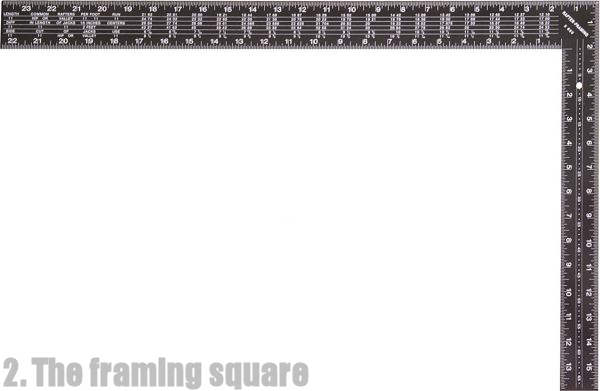5 Measuring Tools Which Are Essential For Woodworking
A while ago we made a list with tools that every homeowner should have (12 Tools Every Homeowner Should Have) and it included all sorts of useful things, from the common screwdriver to the power drill. This time we decided to focus more on specifics so we made a list with measuring tools which we find to be essential for woodworking. They are tools that anyone should have and know how to use, whether we’re talking about a DIY passionate or someone that builds furniture from scratch.
1. The tape measure.

This very simple measuring tool is something that anyone probably already has in their homes. It’s such a basic tool that anyone could have guessed it would be in the list. For woodworking, it would be best to have one measuring tape that you use all the time. That’s because very small but important discrepancies can occur in the case of different tapes.
2. The framing square.
When you’re trying to build a cabinet or anything with right angles, a framing square is an essential tool. It’s a critical element for any woodworker. The framing square is also ideal for checking square edges on large pieces and smaller framing squares are useful in tighter spaces. By using a framing square when building furniture you can be sure you won’t have any problems of accuracy when nailing, screwing or stapling the pieces together.
3. The level.
Having a level nearby when building furniture or doing handy work is very useful but it can also be frustrating. The level is a tool designed to measure and point out imperfections. So it can be quite annoying to have to make changes until everything turns out ok but, at the same time, this also means that you will end up creating something perfect. To avoid meltdowns and unnecessary work, use the level as you built your furniture or whatever it is that you’re making.
4. The short rule.
When you already have a tape measure to rely on, you tend to think it’s everything you need. However, when dealing with small or tight spaces it’s not as practical as a short ruler. Moreover, a short ruler is easier to use and even more accurate than a ruler since you get to place it directly on the piece you’re measuring. A flat 6’’ ruler should be the perfect tool for such cases. It’s practical and it should also fit nicely in your pocket.
5. The try square.
With a construction similar to that of a framing square, the try square tends, however, to be a little more practical and easier to handle. The try square features a metal blade fastened into a wooden handle and doesn’t have a single-body construction, which allows it to rest on the piece you’re building more easily than a normal framing square.




